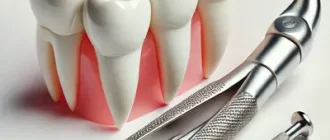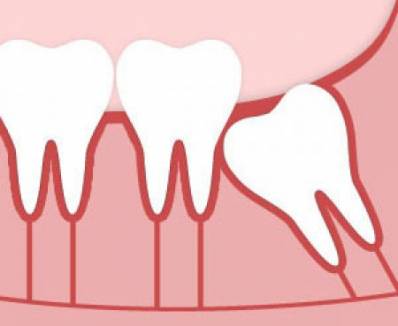Dental implants have revolutionized the way missing or damaged teeth are replaced, especially for front teeth, where aesthetics and function are critical. With modern advancements, front teeth dental implants are more reliable, natural-looking, and accessible than ever before. But what exactly makes them a game-changer in dental restoration today?
Materials Used in Front Teeth Implants
| Material | Usage (%) |
|---|---|
| Zirconia | 60% |
| Titanium | 30% |
| Other Materials | 10% |
Why Choose Dental Implants for Front Teeth?
When a front tooth is missing, the impact isn’t just cosmetic. It affects:
- Speech clarity: Gaps in front teeth can lead to slurred or unclear pronunciation.
- Chewing efficiency: Even a single missing tooth can disrupt your bite.
- Self-confidence: A missing front tooth often makes individuals self-conscious about smiling.
Dental implants provide a permanent solution, mimicking the look, feel, and function of natural teeth. Unlike dentures or bridges, they integrate directly with the jawbone for stability.
The Science Behind Dental Implants
A dental implant consists of three main parts:
- Titanium post: Acts as the tooth root and is surgically inserted into the jawbone.
- Abutment: Connects the post to the crown.
- Crown: A custom-made cap that looks like a natural tooth.
The process relies on osseointegration, where the titanium post fuses with the bone, ensuring durability and stability.
How Long Does the Process Take?
Typically, the implantation process takes several months:
- Consultation and planning: Initial x-rays and 3D imaging to assess bone structure.
- Implant placement: The titanium post is surgically placed, requiring 3-6 months for healing.
- Crown attachment: Once the implant integrates with the bone, the custom crown is placed.
Healing Time Comparison for Front Tooth Implants
| Type of Implant | Healing Time (Months) |
|---|---|
| Traditional Implant | 6-9 Months |
| Immediate Load Implant | 1-3 Months |
Are Dental Implants Painful?
Surprisingly, most patients report minimal discomfort during and after the procedure. Modern anesthetics and techniques ensure a virtually pain-free experience. Over-the-counter pain relievers are often sufficient for post-procedure recovery.
Modern Trends in Front Teeth Implants
- Immediate Load Implants:
- Traditionally, patients had to wait months before getting a crown. Now, immediate load implants allow crowns to be attached within days, significantly reducing the wait time while maintaining excellent outcomes. This trend caters to individuals who prioritize both speed and aesthetics, making it a go-to option for professionals who cannot afford prolonged gaps in their smiles.
- Immediate load implants also utilize advanced materials that support quick healing and integration, which means patients experience fewer complications and faster recovery times compared to traditional methods.
- 3D Printing Technology:
- Cutting-edge 3D printing ensures custom-fit implants and crowns, enhancing precision and comfort. This technology has revolutionized the dental industry by minimizing human error and providing perfectly tailored solutions for each patient.
- With 3D printing, dentists can fabricate temporary crowns within hours, allowing for seamless transitions during the healing phase. Additionally, the technology reduces overall treatment costs and increases accessibility for patients.
- Zirconia Implants:
- A metal-free alternative, zirconia implants are ideal for patients with metal allergies and offer excellent aesthetics for front teeth. Their natural tooth-colored appearance eliminates the risk of dark lines along the gums, a common issue with traditional metal implants.
- Zirconia implants are also biocompatible and resist corrosion, making them a durable choice for long-term use. Their smooth surface reduces plaque accumulation, promoting better oral hygiene and gum health.
- Digital Smile Design (DSD):
- Using advanced software, dentists can design and preview your new smile before the procedure, ensuring patient satisfaction. This personalized approach helps patients visualize outcomes and make informed decisions about their treatment.
- DSD also allows for collaborative planning between the patient and dentist, fostering a greater sense of trust and involvement. With detailed simulations, patients can tweak and perfect their desired look before committing to the procedure.
Costs: What Should You Expect?
The cost of a single front tooth implant in the US ranges from $3,000 to $6,000, depending on factors like:
- Bone grafting requirements, which are essential for ensuring the implant integrates properly with the jawbone, especially in cases of significant bone loss.
- The type of crown material (ceramic vs. zirconia), where ceramic often provides a natural look while zirconia is prized for its durability and hypoallergenic properties.
- Location and expertise of the dental clinic, as clinics in major metropolitan areas often provide access to cutting-edge technologies and highly trained specialists.
Many clinics offer payment plans, making this life-changing procedure more accessible.
Cost Breakdown of a Front Tooth Implant
A single dental implant has a 95% success rate, according to the American Academy of Implant Dentistry (AAID). Proper care and maintenance can make them last a lifetime.
Real-World Case: Emily from Austin, Texas
Emily, a 32-year-old marketing executive, lost her front tooth in a biking accident. She opted for an immediate load implant with a zirconia crown. Within a week, her new smile was ready, boosting her confidence and restoring her professional appearance. “It felt like getting my life back,” Emily shared.
Caring for Your Front Teeth Implants
Maintaining implants is as simple as caring for natural teeth:
- Brush twice daily with non-abrasive toothpaste.
- Use interdental brushes or water flossers to clean around the implant.
- Visit your dentist regularly for professional cleanings and check-ups.
Common Myths About Front Teeth Implants
- “Implants look fake.”
- Modern materials and techniques ensure that implants are virtually indistinguishable from natural teeth.
- “The procedure is risky.”
- Dental implants are among the most predictable and safe procedures in dentistry.
- “They require a lot of maintenance.”
- Routine oral hygiene and regular dental visits are all that’s needed.
Editorial Advice
Front teeth dental implants are not just about aesthetics; they’re a long-term investment in oral health and quality of life. If you’re considering this option, consult a trusted dental professional who specializes in implants and stays updated with modern techniques. Remember, advancements like 3D printing and immediate load implants make now the perfect time to restore your smile with confidence.
Patient Satisfaction Rates for Front Tooth Implants
| Aspect | Satisfaction (%) |
|---|---|
| Aesthetics | 90% |
| Functionality | 85% |
| Overall Experience | 88% |






